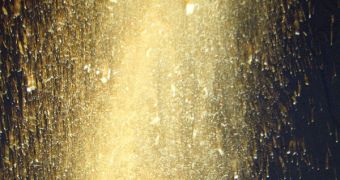Dust has been associated with damages to the nose, throat and lungs for a very long time, especially in the case of those working underground, inside mines or in quarries. Over the years, large amounts of dust are inhaled by workers. These tiny particles can form deposits inside the lung, diminishing their capacity to process air and leading to terrible, potentially fatal, diseases.
The ability to number the dust particles in the air and to assess their density over a given area has been a hard-to-get prize for scientists for quite some time now. But Yamaguchi University professor Masato Shinji came up with a simple and elegant solution to the problem. Taking advantage of the fact that photographing equipment detects dust specs when a flash is being used, the Japanese scientist created a piece of software that can count the particles in the range of the flash and offer an estimate of their number.
This could make risk assessment procedures a lot easier inside mines and quarries and could offer doctors taking care of people working there a valuable tool in determining exactly what the patients were subjected to. This technique could also be used to detect when it's safe to resume work in a tunnel that has just been expanded by a controlled explosion. Currently, visual estimates are used to make such decisions, but the microscopic sizes of the dust specs don't make for a very accurate assessment.
Miners and quarry workers are at a higher risk of developing silicosis, a disease that triggers a direct chemical reaction inside the lungs and can lead to severe complications. Over time, the lung becomes solid and loses its elasticity. If both lungs are affected, then the patient's life is in danger. Silicosis forms over time and can only be prevented by wearing protective facial masks or by working in clean, optimally-ventilated spaces.
This is rarely the case within a mine, where confined spaces are filled with debris and the air is stale. By using simple photographs to detect the levels of dust, many accidents and deaths resulting from lung diseases could be avoided. The tool requires a minimum investment, but its effects reach far beyond a few dollars.

 14 DAY TRIAL //
14 DAY TRIAL //